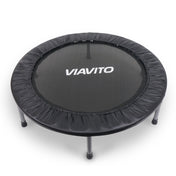TL;DR - The best strength combinations for a home gym rely on adjustable weights, foldable benches, and resistance bands - scalable, compact and perfect for total-body training.
Quick Facts
Category: Strength Equipment
Equipment: Adjustable dumbbells, bench, resistance bands
For: Home users seeking a complete strength setup
Short Answer
The best home-gym strength setups combine modular, space-saving equipment - adjustable dumbbells, foldable benches, and multi-level resistance bands - to maximise training results without needing a full-sized gym.
1) Core Equipment: The Best Strength Tools for a Home Gym
If you want a compact and effective home gym, start with equipment that delivers the highest versatility:
- Adjustable dumbbells (2–24 kg): ideal for progressive overload, strength building, and replacing 10–12 traditional pairs.
- Foldable incline bench: enables presses, rows, Bulgarian split squats, hip thrusts, and core exercises.
- Resistance bands (light to heavy): add variable resistance and enhance joint-friendly strength work.
This combination forms a full-body training system perfect for beginners and experienced lifters. It’s cost-efficient, fits into small spaces, and allows you to follow structured strength programmes at home.
2) Best Strength Combinations: Exercises That Maximise Results
Strength progress doesn’t require bulky racks. The smartest approach is pairing dumbbell strength work with band-based accessory exercises. Try these combinations:
Effective Dumbbell + Band Pairings
- Dumbbell squats + banded glute bridges
- Dumbbell chest press + banded face pulls
- Dumbbell rows + banded lat pulls
- Dumbbell lunges + banded lateral walks
- Dumbbell RDL + banded hamstring curls
This approach delivers:
✔ total-body strength
✔ stability and joint protection
✔ balanced muscle development
✔ strength endurance and mobility support
3) Optimise Space: The Best Compact Layout for a Home Gym
A successful home gym depends on smart organisation. To avoid clutter and maintain motivation:
- Store dumbbells under the bed or in a corner stand
- Hang resistance bands on wall hooks
- Slide a foldable bench behind a door
- Keep a small training mat rolled up under a desk
A tidy layout improves consistency and helps you stick to your strength plan - especially in small apartments or shared spaces.
4) Track Strength Progress to Stay Consistent
Strength development relies on progressive overload - and tracking makes it simple. Use:
- Fitness apps
- Smartwatches
- Notes in your phone
- Adjustable dumbbells with digital tracking (if available)
Monitoring reps, sets, and resistance helps you increase intensity gradually and avoid plateaus.
A visible progress chart is one of the most powerful motivation tools for home training.
Best Strength Combinations for a Home Gym
Building a strong, effective home gym doesn’t require heavy machinery. With smart strength combinations - adjustable dumbbells, a foldable bench, and resistance bands - you create a scalable, space-efficient setup that delivers long-term results. Focus on consistent training rather than collecting equipment.
FAQ
Q: Do I need a squat rack for home strength training?
Not for most people. Adjustable dumbbells and resistance bands provide enough load for effective total-body strength development.
Q: Are adjustable dumbbells worth it for a home gym?
Yes - they save space, allow progressive overload, and replace an entire rack of traditional weights.
Q: How should I combine strength and cardio at home?
Alternate days (e.g., strength Mon/Wed/Fri, cardio Tue/Thu) or use hybrid circuits if you want fat loss and conditioning in one session.

